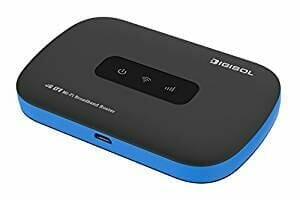
Wi-Fi is a wonderful thing. It makes connecting to the internet easier for just about any device. However, from time to time it can get bogged down and cause you a lot of frustration. During these times, it's great to know what you can do to speed up your Wi-Fi and get it back into ideal working order.
Here are 5 easy ways that you can speed up your Wi-Fi
Finding the perfect spot
It's important to make sure your router is in the ideal place. Many people tend to hide their router away because it isn't the most attractive device, but if you want your Wi-Fi to be at its best then the router will need to be out in the open.
If you can mount the router on a wall, then that's going to be an ideal option for allowing it to have the most access to a strong signal. It's also going to be a great idea to make sure it's located as close to the center of the house as possible, that way no matter where you are you'll still be able to get a strong signal. Tucking it away into a corner might look better, but it will make the router less effective overall.
Clearing up the signal
While you may not realize it, other appliances in your home can effect the signal coming from your router. More obviously, this can include other routers but things like cordless phones and microwaves can also cause your Wi-Fi to slow down.
When dealing with this kind of interference, you have two options. You can try moving your router away from these other appliances so that they have less of a chance of having an effect. Another option would be to use a dual-band router as it will be able to navigate the differences a little more easily. If you're in the market for a new cordless phone, there are also options that will allow them to work on a different band than your Wi-Fi so that it won't have an effect on the Wi-Fi speed.
Set Priorities
If you have bandwidth hogs in your home, you may want to look into the options available for your QOT, or Quality of Service. Through this, you can choose to slow down programs or applications that are using up too much of the bandwidth, such as games, social media, video streaming sites and more.
This can be especially helpful if you use the internet for work, because it will ensure that you experience fewer problems with getting your work done that may otherwise be caused by someone else in your home in an intense gaming session or Netflix binge.
Stop Thieves
If your Wi-Fi isn't adequately protected, then it can cause a lot of trouble for your Wi-Fi. It's very important to make sure you have protections in place, not just for your bandwidth but also for your security. Having a stranger tapping into your Wi-Fi isn't the most ideal situation.
Luckily, there are a few things you can do to keep unwanted people from getting into your Wi-Fi. The first is setting up a password, which you should be able to do using the website for the brand of your router or an instruction manual. This will keep people from being able to use your Wi-Fi connection unless they know the password. Another option that you can have is to simply hide your connection from others.
This adds an extra layer of safety because if strangers can't see your connection in the list, then they won't be able to try to hack into it. In most situations, adding a good password will be enough to deter anyone who wants to try to use your connection, but if you live near someone who has more technological skill then it may be worth hiding your connection completely.
Set a schedule
When your router isn't able to reset for a long period of time, it can start to have an effect on your Wi-Fi connection. Sometimes it can slow down or even drop the connection altogether when it's been left on too long. To help with this problem, you can manually reboot your router about every day to keep it functioning well.
Another option you have is to set up a schedule that will allow the router to automatically reboot itself on a regular basis. That way, you won't have to worry about remembering to do it yourself every day.
Conclusion
These options are really just the tip of the iceberg when it comes to speeding up your Wi-Fi. It may be best to start with the easiest options and then more forward as needed. You may find that trying out some of the less complicated options will get your Wi-Fi working as you want it.
 The 10 Best Cable Modems for Cox of 2020
The 10 Best Cable Modems for Cox of 2020 The 8 Best Wireless Router Brands of 2020
The 8 Best Wireless Router Brands of 2020 The 7 Best Linksys Routers of 2020
The 7 Best Linksys Routers of 2020 The 8 Best Wi-Fi Extenders of 2020
The 8 Best Wi-Fi Extenders of 2020 The 10 Best Wi-Fi Routers of 2020
The 10 Best Wi-Fi Routers of 2020 The 7 Best DD-WRT Routers of 2020
The 7 Best DD-WRT Routers of 2020 The 7 Best Netgear Routers To Buy In 2020
The 7 Best Netgear Routers To Buy In 2020 The 10 Best Wi-Fi USB Adapters of 2020
The 10 Best Wi-Fi USB Adapters of 2020 The 8 Best Gaming Routers of 2020
The 8 Best Gaming Routers of 2020 The 8 Best 802.11ac WiFi Wireless Routers of 2020
The 8 Best 802.11ac WiFi Wireless Routers of 2020 The 10 Best Secure Routers of 2020
The 10 Best Secure Routers of 2020 The 7 Best Wireless Travel Routers of 2020
The 7 Best Wireless Travel Routers of 2020 The 7 Best Routers Of 2020 for Under $50
The 7 Best Routers Of 2020 for Under $50 The 7 Best Asus Routers Of 2020
The 7 Best Asus Routers Of 2020 The 7 Best Cable Router/Modem Combos of 2020
The 7 Best Cable Router/Modem Combos of 2020